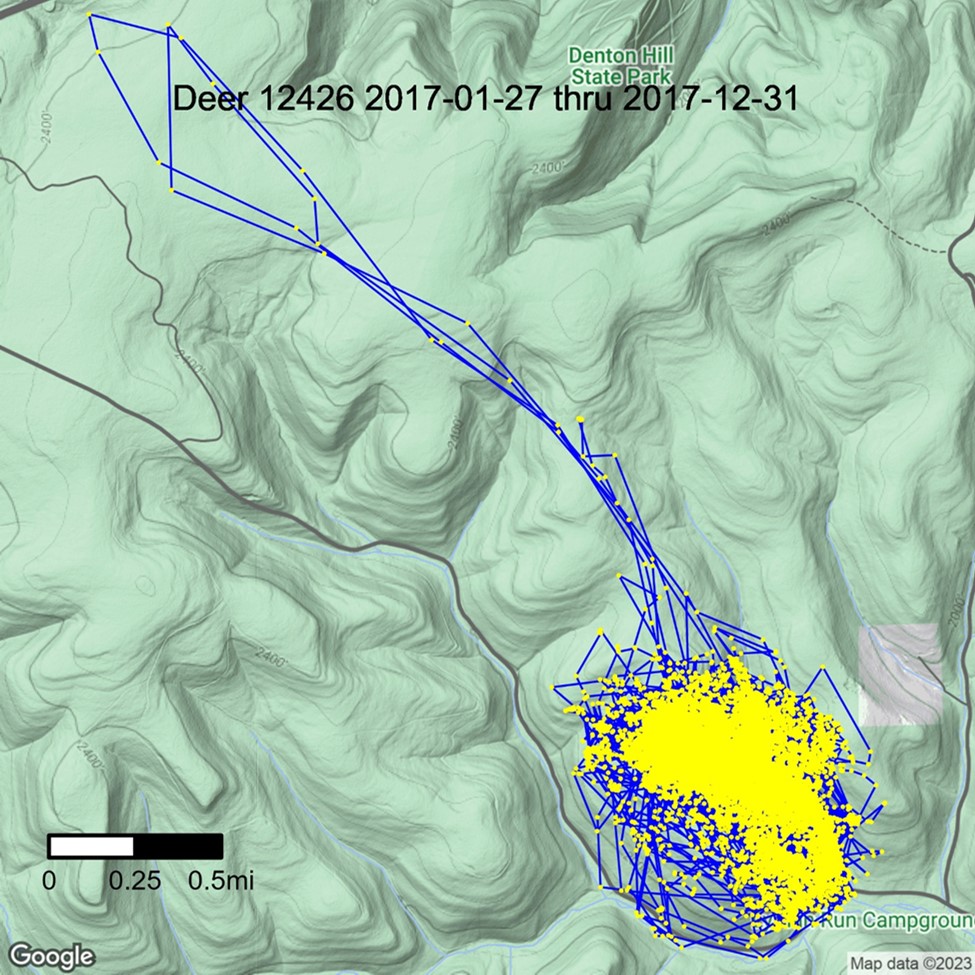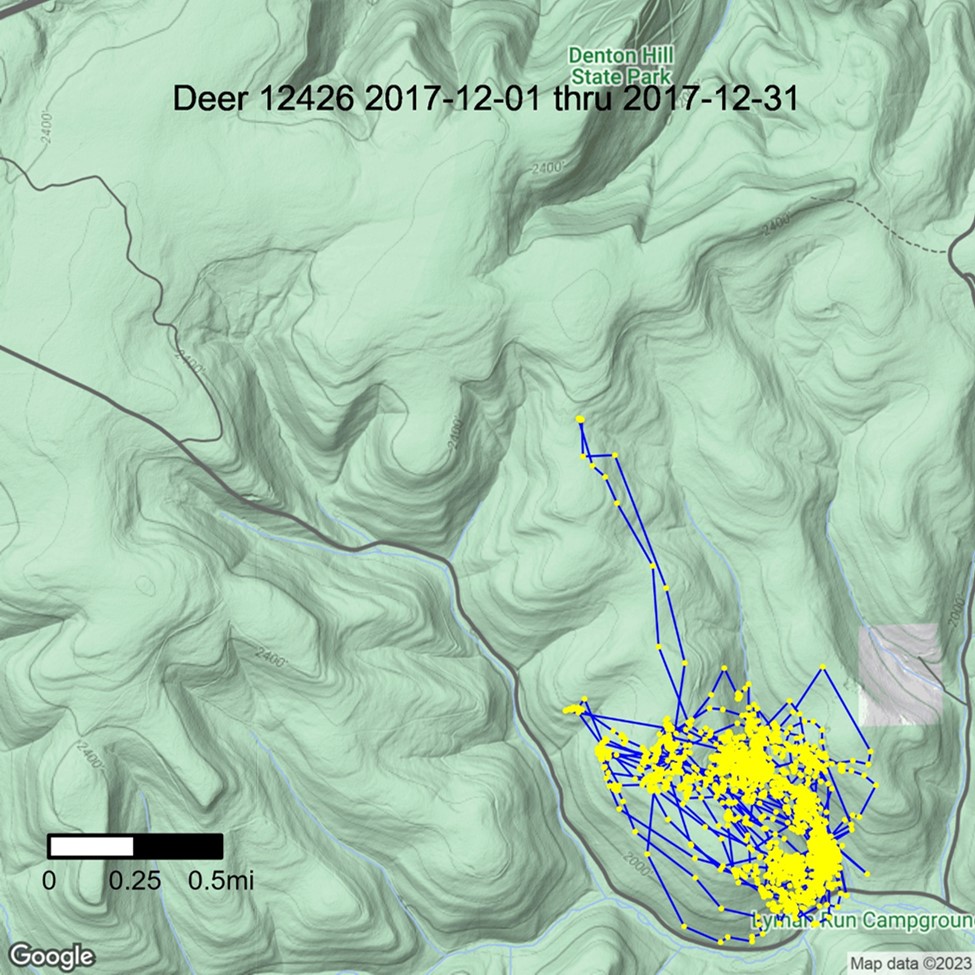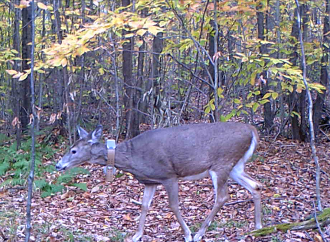Summer is a great time to get outside. Pennsylvania is full of hiking opportunities. Sometimes even deer take a hike.
Deer 12426 was an adult doe captured in January of 2017. We have 14,619 hourly locations for her. Needless to say, we know where she lived and where she went. In July, she decided to go for a walk.
These are hourly location where she appears to be traveling about 0.5 miles/hr. She never spent much time, if any, in the same place.

A 2.5 mile out and back hike that took her about 13 hours. Given the mass of yellow dots on the map, her home range is well defined. Why would she make this summer excursion? Presumably as an adult, she would have had fawns that were about a month old at the time.
Strange but we have seen other deer make these one time movements at various times of year before. There was the star of Real Does of the Deer Forest Study. And there are the time share twins.
What happened after her summer day trip? Looking at the other 14,606 locations, not much until October. That’s when she headed out again.

A doe traveling in October again is strange. The rut is just starting and we know that best strategy for a doe is to stay put and let all the bucks run around.
And take a look at her travel path for both trips.

The differences between the tracks probably has more to do with differences in timing of taking hourly locations than her actual travel path.
I have to visit a grouse covert several times before I can efficiently hunt the ground and certainly don’t ask me to retrace my exact steps on every visit. In fact, odds are on the first couple of visits I’ll surprise myself where I end up!
So it is amazing that a deer can do this months apart. I’m sure the woods look very different to those that live there. Travel paths may be just as evident as roads and signs to us. If you tracked me from home to the office, the route would surely be the same and I didn’t forget how to get there during COVID.
Something that may be even more amazing, Deer 12426 made those trips the same time of year as the timeshare twins, Deer 17163 and 17157. Each made a summer trip (one in June and one in July); one made a fall trip (October) and one made a winter trip (January). And both followed the exact same path for all trips.
Deer 12426 even made a false start in December!

These movements lead to more questions than answers. Why did she make the exact same movement in July AND October? Why are we seeing this in multiple females in different areas?
For hunters, how many does show up on your game camera that came from miles away? Probably more than we realize because they don’t have unique identifying characteristics on top of their head.
For managers, how do you account for these movements when it comes to disease transmission and management?
Unfortunately, understanding deer movements at the landscape scale is more complex and mysterious than we imagined.
-Duane Diefenbach
